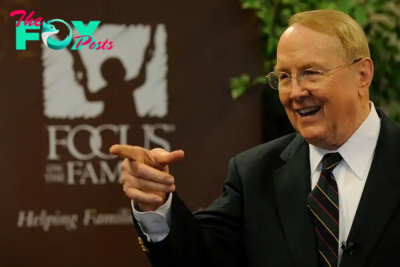History
When History Tourism Puts Profit Before the Past
It’s summertime, which calls to mind the perennial question for parents: where can we take the kids on vacation and learn something along the way? That question sustains our nation’s massive heritage tourism industry. Odds are you already have a list full of destinations with fascinating museums and popular historic sites. But it’s not just about kids and vacations. In the buildup to the nation’s 2026 semiquincentennial birthday celebration, planners everywhere are hoping to leverage History tourism to boost their local economies.
Boston’s Freedom Trail—arguably the nation’s most popular American heritage tourism site— appears to offer a prime example for them to follow. The wildly popular self-guided Freedom Trail walking tour, which follows an actual red line drawn on city streets and sidewalks, has been leading tourists to the city’s most iconic historic sites since the 1950s. Think Bunker Hill, Old Ironsides, and the Boston Massacre.
The Freedom Trail’s simplicity makes it effective. For little more than the cost of paint and a few signs, Boston bought itself a national landmark celebrating the birth of America—one that is simultaneously its own destination, map, and tour guide. No devices needed. For some families, the Freedom Trail is an entire vacation.
As a historian of memory, I too was impressed by Boston’s Freedom Trail. But the Freedom Trail, it turns out, wasn’t created by historians. It was actually drawn by a backroom confab of businessmen and real estate developers. In fact, the Freedom Trail succeeds as public history only by making us forget that little about it is actually public.
Boston newspapers first pitched plans for a proto-Freedom Trail in the 1930s. But the idea didn’t catch on until after World War II. By that point, most of the city’s once-massive textile industry had fled to the nonunion South. The Great Depression eroded what remained of the city’s other traditional labor markets. When John Hynes became mayor in 1949, he aimed to revive Boston’s downtown economy by using new federal housing laws that created big incentives for private developers. Their goal: spur growth by replacing “slums” with fun attractions that might lure well-heeled white tourists from out of town. In historic Boston, then, the question was how to make the past profitable.
Read More: The True Meaning of 'Give Me Liberty'
Boston Evening Traveler editor Bill Schofield had an answer. Beginning in March 1951, Schofield used his daily column to resurrect the notion of a Revolutionary walking tour, what he called a “liberty loop.” “THE PEOPLE would like it,” he insisted, and “it would add to the looks of the city.” Schofield framed the trail as a tool to help respectable tourists avoid what he considered to be less-than-respectable aspects of Boston’s Italian North End and the bawdy amusements of adjacent Scollay Square. Schofield noted how pro-development pundits expected that “such a plan would pay dividends almost beyond belief.”
Schofield’s gambit worked. Mayor Hynes called him personally to endorse the idea. Soon the Boston Chamber of Commerce stepped in and, within months, erected 30 painted plywood signs pointing “toward Old Boston’s most famous historical shrines.” Forty thousand visitors walked the trail by 1953, the year that Boston issued new metal trail markers each featuring a gold silhouette of Paul Revere.
In drawing the line, as it were, this coterie of newspapermen, politicians, developers, and businesspeople expressed ideas about history that are hard wired in the Freedom Trail today. These ideas silently filter into how thousands of vacationers learn about American history in Boston every day, just by following that famous red line.
Foremost among those ideas is the notion that doing History is about gathering up only the most important events and putting them in the right order. But what are the most important events? And what is the right order?
What tourists don’t learn in Boston is that the answers to those questions for Schofield and his compatriots had little to do with history and everything to do with turning a profit. Laying out a clear route was essential, they reasoned, not because it made for good history, but because as Schofield opined, doing so would increase the time visitors had “for pleasure and incidentally for spending money” at businesses that would spring up along the trail.
Read More: America Is in Denial About Its British Imperialist Origins
In their minds, it also meant drawing the line carefully away from histories that might confront prosperous white tourists with urban poverty or ethnic and racial difference. They didn’t include a stop at the site of Boston’s famed Liberty Tree, for instance, because it was deemed to be too close to Chinatown. Schofield worried too about insolent street kids, and the problem of suburban tourists being “greeted with mobs of urchins at Paul Revere’s House.” And though Crispus Attucks—the formerly enslaved man celebrated as the first American killed in the Revolution—could just as well have been the trail’s mascot, it’s worth noting that by the 1950s Paul Revere had become a beloved symbol of white entrepreneurial manhood. Mark Bortman, the wealthy plastics magnate who chaired the Chamber of Commerce’s committee on historic places, was a Revere fanatic. He and the other men who drew the line loved seeing Revere on his horse.
They loved it so much, in fact, that they were willing to remove anything or anyone who blocked their view. In his column, Schofield imagined “the whole North End peninsula [with] all the occupied buildings moved out of the way” of its historic buildings. It was precisely the vision that made Boston site to some of the nation’s most notorious instances of postwar demolition and displacement.
Many of the charming pedestrian-only plazas visitors encounter along the trail today, such as the Paul Revere Mall, were once filled with the homes of Boston’s working poor. But the Chamber of Commerce leveraged the trail as a justification for removing people and buildings that did not align with their chosen past.
In places like Boston’s Italian North End, which by the 1950s was known globally for the persecution of Italian Anarchists Sacco and Vanzetti, trail boosters preferred to re-remember in rosy tones the great accomplishments of men immortalized in Longfellow’s famous poem about Revere’s ride.
The good news is that over the years many thoughtful historians had a hand in shaping how the nonprofit organizations that manage most of the Trail’s historic sites recount the Revolution in Boston today. But despite their efforts, the founding misstep of linking History to profit has rendered the trail persistently vulnerable to power.
Read More: How America Keeps Adapting the Story of the Pilgrims at Plymouth to Match the Story We Need to Tell
During the buildup to the nation’s 1976 bicentennial celebration, for instance, Congress insisted that the National Park Service establish a park in Boston, and that it encompass the Freedom Trail sites and the old Charlestown Navy Yard that President Nixon had decommissioned in 1973. The Park Service, which had been studying Boston for decades, refused. How could it possibly sustain such a massive park with public funding? And, besides, lumping the Navy Yard in with the Revolution didn’t make historical sense. But it was no use. Hearings harped on the importance of patriotic tourism and the need to replace 5000 jobs lost with the Navy Yard’s closure. By October 1974, Boston got its National Park.
The Park Service neither owns the Freedom Trail nor has much control over what we encounter there. Instead, it operates what’s called a “partnership park,” wherein decisions about how to do history hinge on delicate negotiations between public and private interests. These negotiations are embedded in power struggles about how we understand our collective past. All this means that buried within the Trail’s own story is a far more complicated account of the American saga than what visitors typically learn at Boston’s Revolutionary hot spots.
What makes the Freedom Trail so powerful is its tendency to obscure its own past. Who on vacation even thinks to ask how the line got there and why it goes where it does? Who argues with a red line?

Ask that question and you discover that the Freedom Trail’s story is really about who is remembered and who isn’t. And this points to why walking the Freedom Trail is only truly a vacation for those who have benefited from American prosperity in the last century.
So, is it wrong to want Freedom Trails for other American cities hoping to attract history tourists for the 250th birthday of the U.S. and beyond? Certainly not. But what vacationers and planners alike should keep in mind is that it is always dangerous to disregard how history gets made. The big lesson in Boston is that history for profit skews our view of the past in favor of those people who are willing to pay the most for it. Certainly, there are alternatives, but those too get lost when we forget to think about who draws the line.
Seth C. Bruggeman is Professor of History and Director of the Center for Public History at Temple University. He is the author of Lost on the Freedom Trail: The National Park Service and Urban Renewal in Postwar Boston (University of Massachusetts Press, 2022).
Made by History takes readers beyond the headlines with articles written and edited by professional historians. Learn more about Made by History at TIME here. Opinions expressed do not necessarily reflect the views of TIME editors.
-

 History1w ago
History1w agoSynchronized Swimming’s History Explains Why No Men Will Compete in Paris
-

 History1w ago
History1w agoDoes It Matter If We Know Who Betrayed Anne Frank?
-

 History1w ago
History1w agoHistory Suggests How to Save California’s Beaches From Climate Change
-

 History2w ago
History2w agoDespite Protest Rules, the Olympics Have Never Been Neutral
-

 History2w ago
History2w agoThe Nazi-Era Myth Behind Olympics Gender-Testing Rules
-

 History2w ago
History2w agoThe Surgeon General—Not the Supreme Court—Understands the Founders’ Vision for the Second Amendment
-

 History2w ago
History2w agoThe Root of James Dobson’s Political Power Is Decades of Parenting Advice
-

 History3w ago
History3w agoY2K Sent A Warning. The CrowdStrike Outage Shows We Failed to Heed It



























